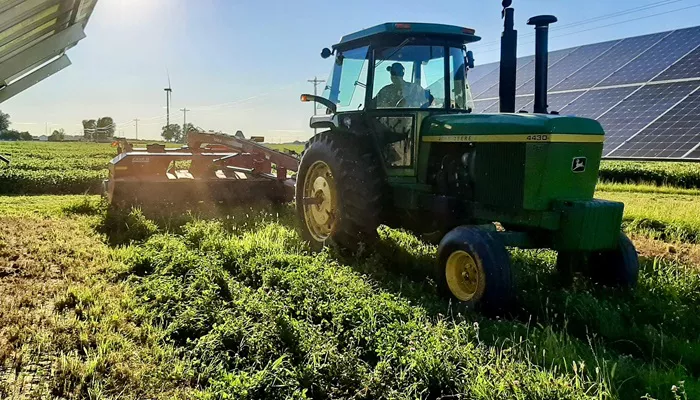Michigan State University (MSU) researchers and Extension educators are investigating agrivoltaics, a system that merges farming with solar power production, to see if it can work well in Michigan.
Agrivoltaics involves placing solar panels directly over farmland. These panels are set a few feet above crops or arranged in rows with space for plants or animals to grow beneath them. The idea is to keep producing crops or raising animals while also generating income from solar energy.
Supporters of agrivoltaics highlight that this approach allows farms to use the same land for both agriculture and solar power. It also offers the chance to use clean energy right on the farm.
Around the world, studies suggest agrivoltaics might help reduce water evaporation, improving water use efficiency. Solar panels may also create habitats for pollinators like bees.
However, solar projects on farmland face some opposition. Critics worry about losing valuable farmland—a limited resource—to solar installations. There are also concerns that federal subsidies might raise land prices, making it expensive for farmers. Installing these solar systems can be costly upfront, which can be a barrier.
Food safety is another concern. When solar panels are removed, small pieces of metal or plastic could remain in the soil. Michigan’s Potato Growers have expressed worry because potatoes grow underground and might absorb these contaminants.
Moreover, how well agrivoltaics fits with Michigan’s diverse crops and growing conditions is still unclear.
George Smith, director of MSU AgBioResearch, says this research is vital for helping farmers make smart choices.
“Our role is to provide science-based advice for growers,” Smith said. “We focus on issues like economic feasibility, food safety, and protecting natural resources. Agrivoltaics is complex, and we want to give Michigan farmers the facts they need to decide what’s best for their operations.”
One common misconception is that solar panels require removing crops or animals from farmland. Charles Gould, a bioenergy educator with MSU Extension, disagrees.
“We don’t have to take land out of production to add solar,” Gould explained. “It’s not one or the other. Both can happen together. Though new in Michigan, agrivoltaics is used worldwide, and we want to explore ways to boost farm income.”
Gould regularly talks with Michigan farmers interested in solar energy. In July, he will attend the AgriVoltaics World Conference in Germany, where experts share research and visit farms using solar panels.

